
Cargo traffic in Europe
began again yesterday and today after a five-day hiatus caused by the
ash cloud from Iceland’s volcano.
On Wednesday, two thirds of European airspace
was re-opened for scheduled air traffic without restrictions. During
nighttimes national authorities in the UK, France, Germany, and some
other states had given airports and airlines their okay for getting
back to normal despite some regional concentration of volcanic ash particles
still floating in the atmosphere. With London Heathrow, Paris CDG, Frankfurt,
and Amsterdam, Europe’s biggest airports are open for passenger
and cargo flights again.
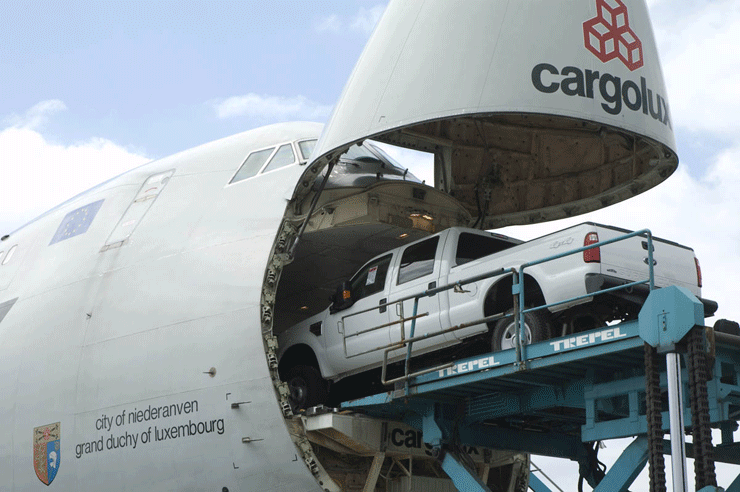
Freight carrier Cargolux announced the
commencement of scheduled services and the implementation of a Luxembourg
based emergency program that would distribute flights in order to help
clear the backlog along the airline’s network.
KLM, Skyteam’s ally, told clients
that all intercontinental flights in and out of Schiphol and about half
of European flights are now being flown. The carrier says this number
will progressively increase in the coming days.
British Airways Cargo is getting back
to normal step by step, too, since the UK airspace is open now.
Lufthansa Cargo brought back 12 MD-11Fs
to its Rhein/Main airport hub, with three of the aircraft having departed
to Hong Kong, Narita/Osaka and Mumbai on Tuesday and more flights conducted
on Wednesday.
Air France Cargo has resumed flights on
a limited scale after the gradual reopening of European airspace.
Strangely enough and in contrast to the
aforementioned carriers, KLM subsidiary Martinair Cargo says nothing
about departures, arrivals, or cancellations of their freighter fleet.
The latest news on the carrier’s website is dated December 21,
2009, announcing the transport of white rhinos.
In Germany, Berlin, Hamburg and Bremen
were fully opened on Tuesday evening followed by Munich, Frankfurt and
others on Wednesday.
The five-day standstill and ongoing disruption
of cargo traffic caused unprecedented financial losses to the industry.
German enterprises including airlines, airports, forwarders, tour operators
and travel agencies have lost one billion Euros per day according to
sources. Lufthansa Cargo’s Nils Haupt spoke of a “double
digit million Euros amount” when asked by Air Cargo News Flying
Typers.
Swiss International Airlines also reported
severe financial leaks caused by the ash cloud without giving further
details.
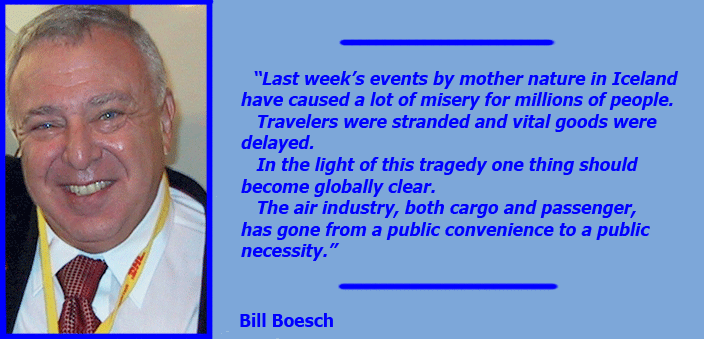 |
Head of Communications
Hermann Hausmann of Cologne-based insurance company Delvag Luftfahrtversicherungs-AG
stated that the consequences of natural phenomena like volcanic eruptions
fall under a clause of force majeure, which exempts all parties from
liability. When air traffic is disrupted by floating ashes in European
skies “liability does not apply within the application area of
the Warsaw Convention and The Hague Protocol,” stated Hausmann.
The 1929 Warsaw Convention, amended in 1955 at The Hague and in 1975
in Montreal, is an international treaty that regulates liability for
carriage of people, luggage and goods.
Car maker BMW announced the slow down
or complete halt of production in some assembly plants as of today (Wednesday)
due to the running out of components normally flown in from suppliers
in South Africa and other manufacturing sites. The enterprise didn’t
exclude a temporary standstill of the Spartanburg plant in South Carolina
as a consequence of missing supplies. Japanese Nissan is confronted
with similar problems since the air flow of sensors produced in Ireland
was interrupted by Eurocontrol’s flight ban. Kenyan producers
of vegetables and flowers had to destroy some of their harvests since
no plane departed from Nairobi to Europe. The same goes for neighboring
Ethiopia farmers.
Meanwhile, the German Aerospace Center
(DLR) completed a test flight measuring ash concentrations in the atmosphere.
Although the exact results are still being analyzed, there have been
some interesting findings, said DLR.
The LIDAR (Light Detection And Ranging),
a laser instrument that works similarly to RADAR, however with light
pulses as opposed to radio waves, was able to detect ash cloud structures
in vertical layers. These layers fell at very different heights along
the air route of the Falcon 20E aircraft above Germany.
Lufthansa started its own test flight
on Tuesday, deploying an A340-600 to measure the concentration of volcanic
remains in the sky. Unlike the DLR mission that evaluated only German
airspace, this flight will cover most parts of Europe. Scientists at
the Max-Planck Institute, a non-profit research organization, will analyze
the results. Lufthansa stated that this might take several days.
 |
 |
We heard from Oliver Evans,
Chief Cargo Officer at Swiss World Cargo noting now that the airline
is flying, some words of praise are in order:
“I am very proud of the way our
team, our handling partners and our customers have handled a crisis
with calm efficiency.”
While scheduled passenger and airfreight
carriers are still eagerly waiting for the green light to begin full
commercial operation, other capacity contributors, like charter agents,
report an eruption of demand since the end of last week.
Forwarders and shippers have been requesting
and booking flights using airports anywhere in mainland Europe, like
Spain or Bulgaria, even if it means trucking freight far longer distances
than would usually be considered. Even as airspace re-opens there will
be a huge backlog of cargo and thus high demand for charters.
Reto Hunziker Managing Director of Lufthansa
Charter said of the crises:
“The volcano had a big impact upon
us.
“There is a lot of business out
in the market and we had many requests for space.
“However due to the fact that all
the carriers had aircraft grounded around the globe, right now it is
quite difficult to get any availabilities but we continue to serve our
customers.
“My view is that after backlogs
ease in a couple of weeks and things get back to normal, charters will
be back in full wing.
“In any case due to supply and demand
the few availabilities on the market are offered at a very high rate.
 “Net
affect of the volcano was to drive an already tight capacity offer/situation
and availability making things even worse. “Net
affect of the volcano was to drive an already tight capacity offer/situation
and availability making things even worse.
“Fingers crossed that there will
be no new activity from any volcanoes in Iceland or otherwise!”
Ram Menen, DVP Emirates Sky Cargo reports:
“With the opening of the European
airspace, we have been busy moving cargo through various available points
in Europe using road feeder services to distribute to final destinations.
Sky Cargo has also deployed extra capacity in to the region and hopefully
by Thursday (Apr 22) evening, we will have cleared all our backlogs.
“Right now Emirates Sky Cargo has
opened up our flights for fresh bookings.
“The demand is currently extremely
strong in all areas and the capacity is getting gobbled up as soon as
flights are open for booking (long may it last!).”
 Here on this side of the pond, surveying the
scene American Airlines Cargo President Dave Brooks (left) declared:
Here on this side of the pond, surveying the
scene American Airlines Cargo President Dave Brooks (left) declared:
“Assuming sky opens as planned, "free
at last!!!"
Continental Airlines cargo spokesman Tony Randgaard
observed:
“Here in our Houston headquarters, you
can hear the buzz of conference calls several times throughout the day
and night dedicated to communication and coordination of flight plans
to Europe.
 “Tuesday, we had success getting wide cabin aircraft to Stockholm,
Madrid, Oslo, Rome and Geneva.
“Tuesday, we had success getting wide cabin aircraft to Stockholm,
Madrid, Oslo, Rome and Geneva.
“Tuesday night looked good for BRU, CDG
and AMS (narrow body).
“Shippers can depend on CO Cargo no matter
what else happens to fly into the first opening in the skies.
“Call CO Cargo Service center 24/7 for
the latest news and opportunities.”
Neel Shah, (right) Delta Air Cargo Vice President:
"Regarding the volcano, we are getting
ready to reinstate our full schedule. We operated 14 flights inbound
from Europe which have begun to arrive in the U.S. and expect to operate
a nearly complete U.S. outbound schedule We have been in constant communication
with our customers and have started to accept shipments at our international
gateways for travel later this week. We are currently sitting on a 3-day
backlog in most of our warehouses.”
Heiner/Geoffrey/Flossie
|


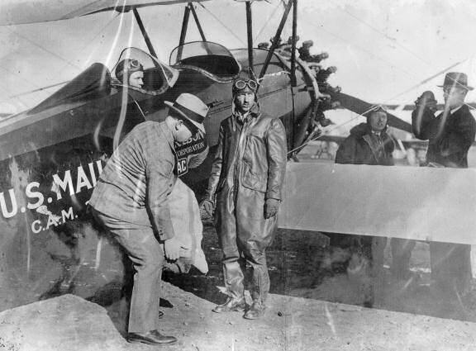
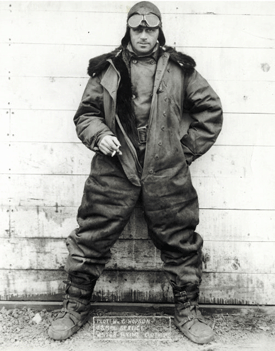
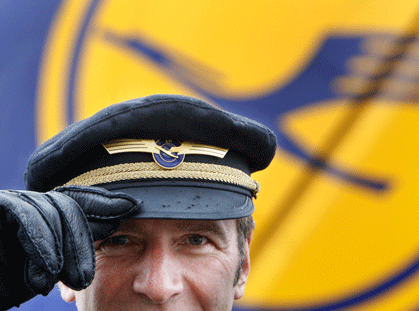 Once
upon a time has now in some cases become twice-a-time as news came forward
that some airline cargo pilots were flying below and around that volcanic
cloud of ash from Iceland in a manner that their 1920’s open-cockpit
pioneering air cargo and air mail counterparts would find quite familiar.
Once
upon a time has now in some cases become twice-a-time as news came forward
that some airline cargo pilots were flying below and around that volcanic
cloud of ash from Iceland in a manner that their 1920’s open-cockpit
pioneering air cargo and air mail counterparts would find quite familiar. Mr.
Davies who is the dean of world aviation historians, having written
thirty-eight books on aviation history including the most complete definitive
work ever—titled “A History of the World’s Airlines,”
told Air Cargo News FlyingTypers:
Mr.
Davies who is the dean of world aviation historians, having written
thirty-eight books on aviation history including the most complete definitive
work ever—titled “A History of the World’s Airlines,”
told Air Cargo News FlyingTypers: